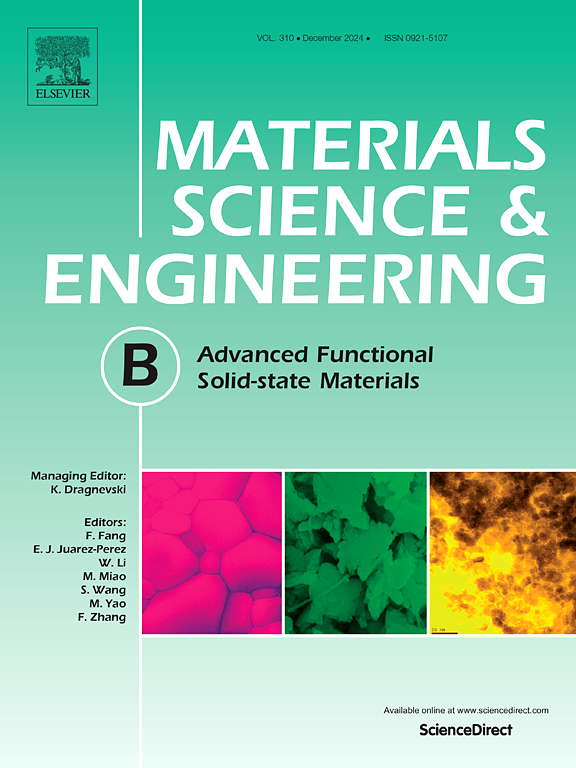Synergistic photocatalytic degradation of multiple class of organic pollutants using GO-TiO2-WO3 nanocomposite
IF 3.9
3区 材料科学
Q2 MATERIALS SCIENCE, MULTIDISCIPLINARY
引用次数: 0
Abstract
The photocatalytic materials and process optimization hold significant promise for the sustainable treatment of effluents present in wastewater, contributing to environmental protection and the conservation of water resources. In this research work, GO based ternary nanocomposite was synthesized using the ultrasonication method and used for the photocatalytic degradation of dyes, antibiotics, and organic compounds. Powder X-ray Diffraction (PXRD), Energy Dispersive Spectroscopy (EDS), High-Resolution Transmission Electron Microscope (HR-TEM), Brunauer-Emmett & Teller (BET) method, X-ray photoelectron spectroscopy (XPS), Ultraviolet–Visible Diffuse Reflectance Spectroscopy (UV- DRS), and photoelectrochemical studies were used to investigate the formation of GO-TiO2-WO3 (GTW) nanocomposite. UV–Vis spectroscopy and mass spectroscopy were utilized to examine its practical ability to degrade effluents present in wastewater. PXRD data confirmed the crystallinity of the nanocomposite. HR-TEM data shows the uniform distribution of TiO2 and WO3 nanoparticles on the GO sheet. BET analysis shows the synthesized nanocomposite has higher surface area which enhanced the pollutant adsorption ability of GTW composite to greater extent. The photoelectrochemical analysis confirms the GTW nanocomposite is an active photoelectrocatalyst and is a n-type semiconductor which is sufficiently reproducible over several light-on–off cycles. The photocatalytic degradation in presence of GTW nanocomposite was found to be 99 %, 94 %, and 93 % for MB, CR and MG dyes, respectively. The photocatalytic degradation for antibiotic and organic compound was also carried out using GTW nanocomposite and the results obtained were 88 % and 87 % for azithromycin and phenol, respectively. To check the practical utility of the synthesized nanocomposite, the catalyst was reused up to three consecutive cycles and shows 90 % degradation rate with methylene blue dye (MB). The synthesized nanocomposite may be a promising photocatalyst for the degradation of effluents present in wastewater.

求助全文
约1分钟内获得全文
求助全文
来源期刊

Materials Science and Engineering: B
工程技术-材料科学:综合
CiteScore
5.60
自引率
2.80%
发文量
481
审稿时长
3.5 months
期刊介绍:
The journal provides an international medium for the publication of theoretical and experimental studies and reviews related to the electronic, electrochemical, ionic, magnetic, optical, and biosensing properties of solid state materials in bulk, thin film and particulate forms. Papers dealing with synthesis, processing, characterization, structure, physical properties and computational aspects of nano-crystalline, crystalline, amorphous and glassy forms of ceramics, semiconductors, layered insertion compounds, low-dimensional compounds and systems, fast-ion conductors, polymers and dielectrics are viewed as suitable for publication. Articles focused on nano-structured aspects of these advanced solid-state materials will also be considered suitable.
 求助内容:
求助内容: 应助结果提醒方式:
应助结果提醒方式:


